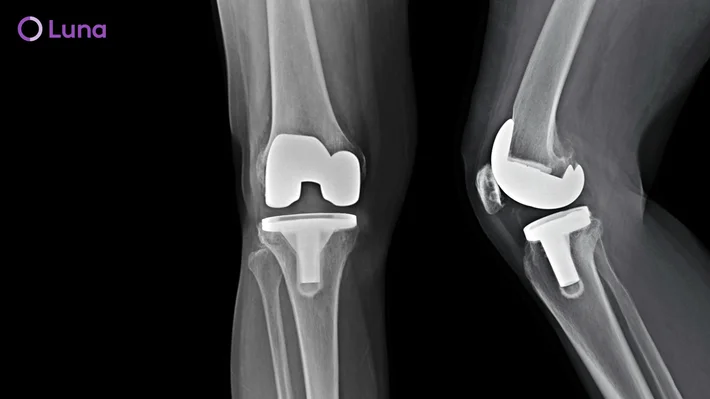
Meet with the best patellofemoral pain syndrome physical therapists in Estero, Florida
Estero, Florida, Luna PTs specialize in treating patients suffering from PFPS and chronic knee pain. Our licensed therapists work with patients on a 1-to-1 basis to create a targeted program of passive and active treatments.
The best part? With Luna, patients can receive physical therapy right in the comfort of their own homes. Our therapists come to you — it’s physical therapy, delivered.

What is patellofemoral pain syndrome?
Also known as “runner’s knee,” patellofemoral pain syndrome refers to chronic pain in the patella, or kneecap. The condition is especially common in athletes and individuals who engage in activities that place inordinate stress on the knee joint.
The symptoms of patellofemoral pain syndrome range from mild discomfort to severe, even debilitating pain, however, the condition typically doesn’t require surgical intervention. Lifestyle changes and physical therapy exercises can resolve the condition altogether and help patients return to everyday activities.
Source: Healthline

What causes patellofemoral pain syndrome?
The condition is strongly associated with a number of activities and risk factors. Overuse is perhaps the primary contributing factor; patients who frequently run, jump, or otherwise place repeated stress on the knee are at high risk. In addition, a previous injury to or surgery on the knee represents a major risk factor.
Some physiological traits can also increase a patient’s risk of developing patellofemoral pain syndrome. For example, as with ACL injuries, PFPS is more likely to affect women. Muscular imbalances or weaknesses, such as a misaligned kneecap likewise represent secondary risk factors.
The most common causes of patellofemoral pain syndrome include:
- Overuse from activities such as running or jumping
- Previous injury to the knee
- Knee surgery
- Pre-existing muscle or bone conditions















